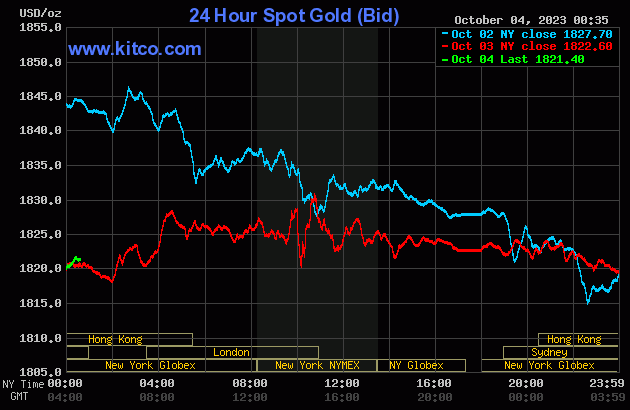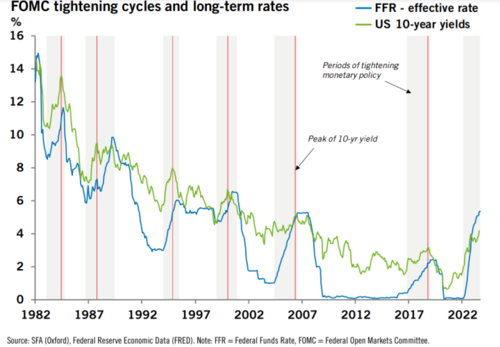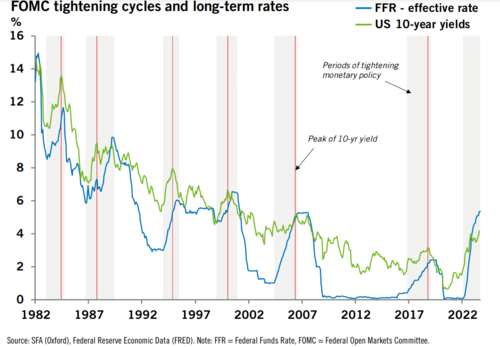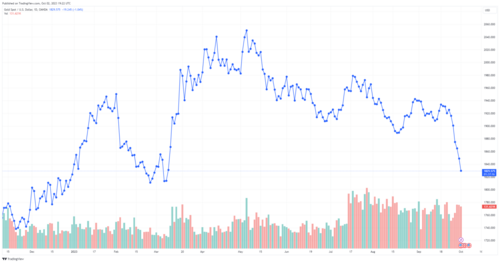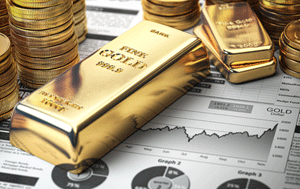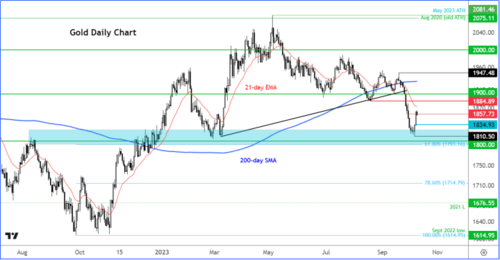
Gold prices reined in by risk-on sentiment, but geopolitics, USD pullback should offer support – City Index's Razaqzada
Today’s uptick in risk appetite is creating some drag on gold prices, but the precious metal’s weekend gap remains open, says Fawad Razaqzada, Market Analyst at City Index.
“In other words, gold is still comfortably higher than Friday’s close,” he observed. “More gains could be on the way for gold for as long as geopolitical risks remain elevated and if the upcoming US macro pointers trigger fresh selling in the dollar, after the greenback ended a run of 11 consecutive weekly gains last week.”
Razaqzada said that even though geopolitical risks such as the ongoing Israel-Hamas conflict haven’t subsided, gold prices have moderated today, due in part to the rebound in bond yields.
“While gold may not be shining so brightly so far today, it could easily find renewed strength as the situation in the Middle East remains intense,” he said, underlining the potential for the conflict to widen. “This is why oil prices have remained elevated. Gold typically rises when there is heightened geopolitical risks.”
He said it’s possible that bond yields have peaked. “The stronger-than-expected US jobs report on Friday failed to deliver any more dollar strength and with the greenback falling further so far this week, the possibility that the dollar may have formed a top is undoubtedly something that many investors are wondering about,” he added. “If we see a similar response to this week’s upcoming data (FOMC minutes, CPI and UoM consumer Sentiment survey, among other things), then this will further fuel speculation that the worst is over [for] gold.”
Razaqzada said gold’s nearly 7% drop from its Sept. 21 high means prices were due to see a short covering rally. “So, some of the bullish price action since Friday could be just that – a short-covering bounce,” he said. “Therefore, one should not get too carried away by the recent bullish price action.”
He remains steadfastly bullish about gold’s long-term outlook, however. “[M]uch of the Fed’s hawkish repricing of interest rates are now done, meaning that the downside for bonds and, by extension, gold should be limited moving forward,” Razaqzada said. “So, be on the lookout for more bullish signals to emerge from here on.”
Razaqzada said that the fact that spot gold has not returned to Friday’s closing prices “must be making it uncomfortable to trade gold, as usually gaps tend to fill in highly liquid assets.” But he cautioned that this is not always the case. “I recall a gap on the EUR/USD a few years ago that remained unfilled for several months,” he said. “While a gap-fill would make things a bit more comfortable, gold can simply grind higher for a while, especially if the dollar selling gathers pace.”
He also offered some short-term strategies that may serve traders well in the current market. “One way to look for new trades while the gap remains open is to zoom in on the smaller time frames like the hourly, wait for a bit of consolidation and then look for long setups once price breaks higher, or about to,” he said, adding that traders can use short-term price structures as their invalidation levels.
“Obviously a much better scenario would be for gold to fill its gap and then create fresh bullish signals to trigger another rally,” Razaqzada said. “That could still happen, and the trigger could be the upcoming US data releases that will undoubtedly move the dollar and bond yields in the direction of the surprise.”
Spot gold continues to hold above $1857 on Tuesday afternoon, which Razaqzada said is the first key short-term resistance level. “While a bit of a move lower from here is understandable, the fact that support in the long-term area around $1805 to $1820 held last week, before the flare up of geopolitical risks, this could be a sign that the metal may have formed a low,” he said.
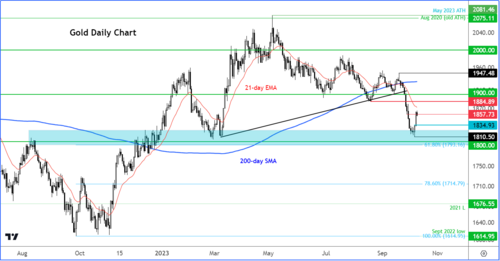
“The next level of potential resistance is seen around $1885, followed by $1900, with the latter being the base of the previous breakdown,” Razaqzada concluded. “On the downside, the next potential support level is Friday’s high at $1835.”
Spot gold last traded at $1858.66, down 0.15% on the session.
By
Ernest Hoffman
For Kitco News
David


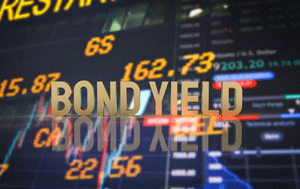 Bond yields can't keep gold down forever as ING sees higher prices in 2024
Bond yields can't keep gold down forever as ING sees higher prices in 2024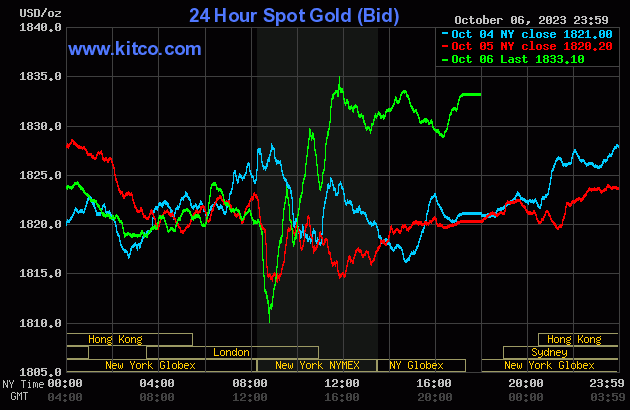
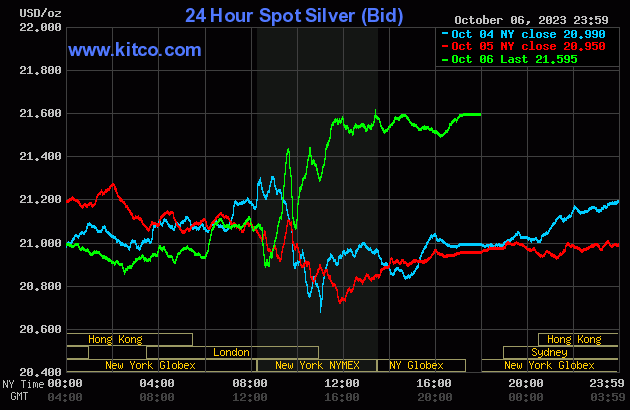
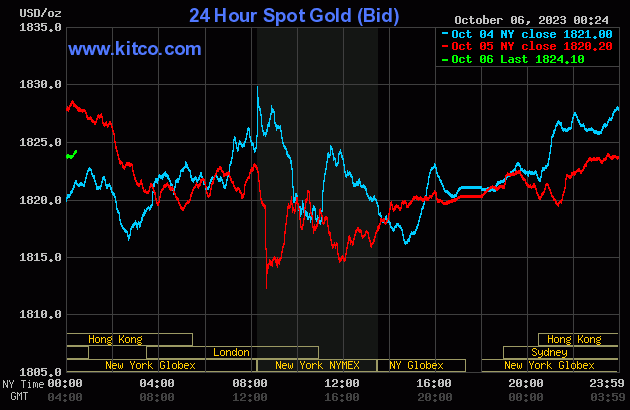
 Central banks buy 77 tonnes of gold, helping the precious metal resist rising bond yields
Central banks buy 77 tonnes of gold, helping the precious metal resist rising bond yields
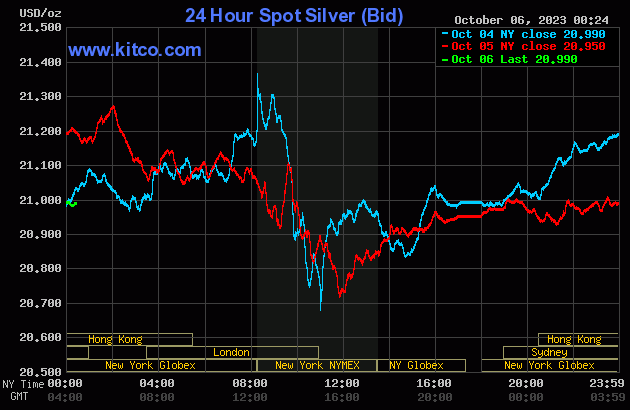

 Nervous crypto investors gain comfort via total return approach instead of only chasing price gains
Nervous crypto investors gain comfort via total return approach instead of only chasing price gains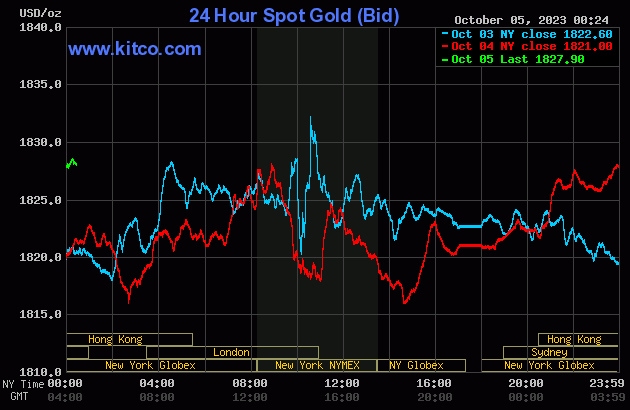

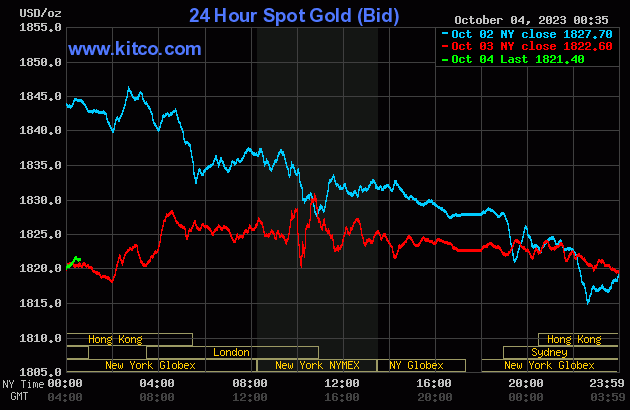
 The Fed to hike rates again in November, rate cuts coming only in 2025, here's why – Pat LaVecchia
The Fed to hike rates again in November, rate cuts coming only in 2025, here's why – Pat LaVecchia